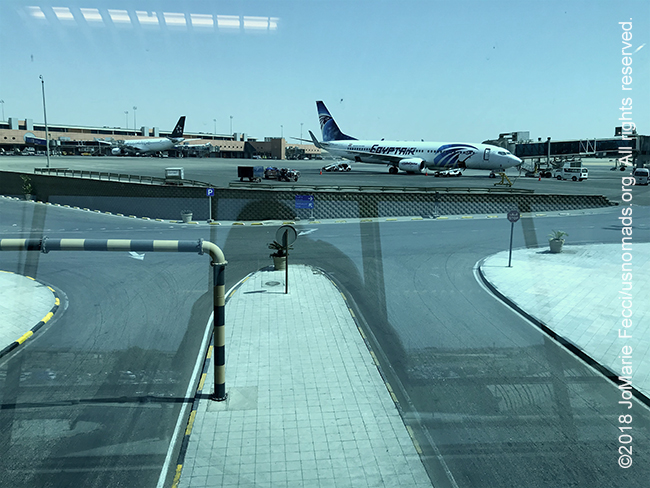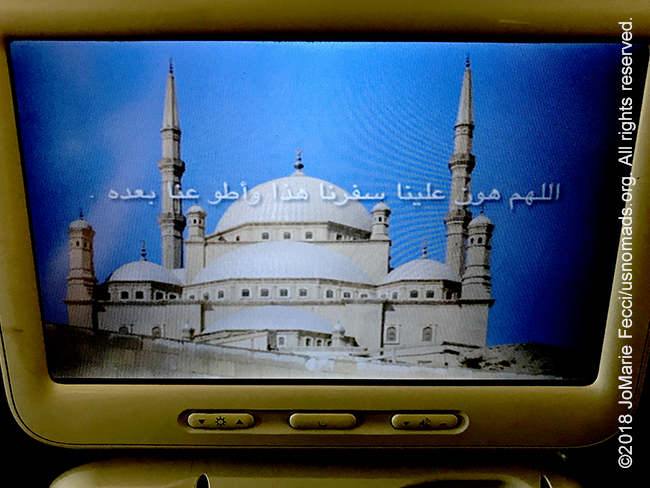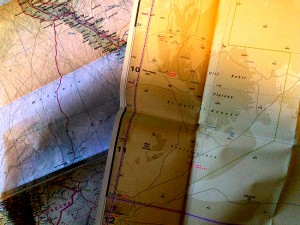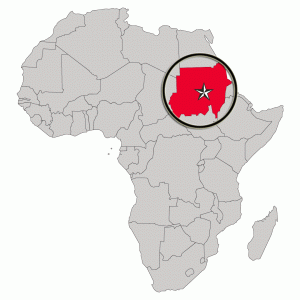
PARIS, FRANCE (14 April 2018) — A day of airports and transitions as I left Sudan early in the morning for my first flight to Cairo, and then on to Paris for the night. It was disconcerting to make such a rapid trip through such radical changes of space, climate and culture.
The calm of the sleepy African capital as it woke up to a new day was my “goodbye” from Khartoum. The short drive to the airport was quiet and my mind was still a blur of colors and experiences from the desert to the sufis that seemed so full of new mysteries. The magic of the Sahara once more. Reflections on the incredible differences as I have journeyed across it learning new things in each place, a slow reveal of desert teachings as I go.
The flight to Cairo is short and even the airport there is a whir of activity mirroring the city beyond. It is the last edge of Africa, and already the rhythm is no longer really African here. The transition is in progress as I spend a bit of time at the “food court” where I can have a beer for the first time in a while (alcohol is legal in Egypt, but not Sudan — and even while I was traveling in Egypt I did not really drink alcohol because it wasn’t part of the local custom).
The next flight was to Paris, where the weather was quite a bit colder and it was already night. I was tired even though it was not really that late and I probably could have gone “out” for the evening. I had taken on the desert’s sense of time in sync with the sun, and for the first time in a long time I realized how far urban life removes us from nature’s rhythms in so many ways. I went to sleep as soon as I checked in to a hotel right near the airport …

ABOUT THE EXPEDITION

JoMarie Fecci, of USnomads, sets off on an independent scouting trip across Egypt and Sudan in preparation for an up-coming Sahara expedition. Driving locally-sourced Toyotas and working with small local teams in each region, she will traverse a winding route that jumps off from key points along the Nile as far south as Khartoum, where the Blue and White Niles meet. During the journey she will visit a series of UNESCO world heritage sites focused on the ancient civilizations that occupied the region and meet with local communities. The primary goal of this mission is to assess terrain, security, driving conditions, logistical concerns and approximate timeframes for future travel.
WHERE WE ARE

The Sudan in Northeast Africa is bordered by Egypt to the north, the Red Sea, Eritrea and Ethiopia to the east, South Sudan to the south, the Central African Republic to the southwest, Chad to the west and Libya to the northwest. The country has a total area of 1.861.484 square kilometres (718.722 square miles), making it the third largest in Africa. The terrain is generally flat plains, broken by several mountain ranges. In the west the Deriba Caldera (3,042 m or 9,980 ft), located in the Marrah Mountains, is the highest point in Sudan. In the east are the Red Sea Hills. The name Sudan derives from the Arabic “bilād as-sūdān” or “the lands of the Blacks.” The population of roughly 37 million people is made up of 597 different ethnic or tribal groups speaking over 400 different languages and dialects. Sudanese Arabs are by far the largest ethnic group, estimated to account for 70% of the population. They are almost entirely Muslims. The majority speak Sudanese Arabic, with some different Arabic dialects, while many Arabized and indigenous tribes like the Fur, Zaghawa, Borgo, Masalit and some Baggara ethnic groups, speak Chadian Arabic. The nation’s official languages are Arabic and English. Sudanese history goes back to Antiquity, when the Meroitic-speaking Kingdom of Kush controlled northern and central Sudan and, for nearly a century, Egypt.